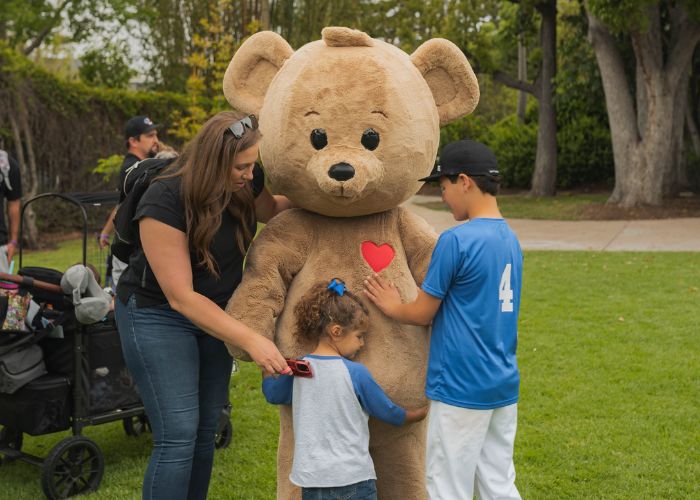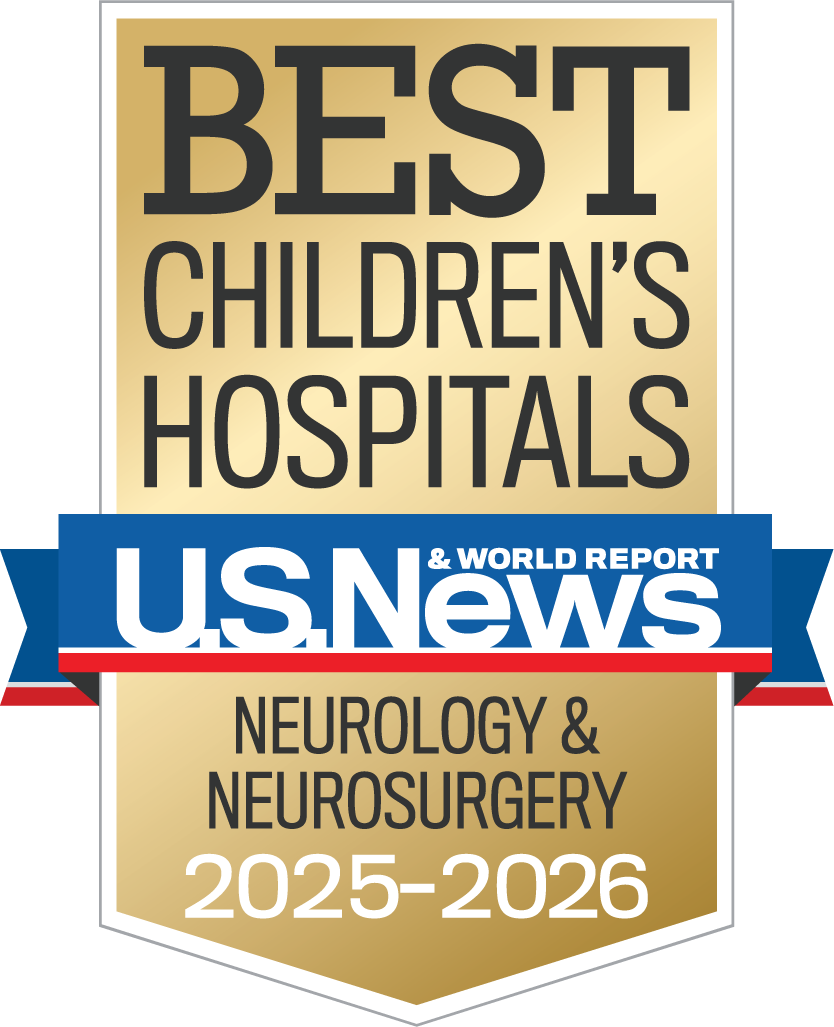CHOC’s first annual epilepsy surgery patient reunion celebrates successes like Porsche’s
Former CHOC patient Porsche Lundberg couldn’t make it to the first-ever Epilepsy Surgery Patient Reunion hosted by the CHOC Neuroscience Institute.
It wasn’t that she wasn’t feeling well.
Rather, Porsche missed the recent event because the commute would have been a bit of a challenge.
Porsche, 19, lives in London.
She’s in the honors biomedical program at the University of East London and plans to go on to earn a doctorate so she can focus on possible genetic-level cures for her condition, myoclonic astatic epilepsy.
Her remarkable recovery, thanks to a medical device that was experimental for her condition at the time, is a testament to the excellent and innovative care CHOC’s epilepsy team provides to patients.
And the Epilepsy Surgery Patient Reunion, attended by more than 400 patients and families, clinical staff, EEG technologists, nurses, physicians, and others, was a fun-filled day of celebrating wins like Porsche’s and the improved quality of life enjoyed by many former CHOC epilepsy surgery patients.
“Epilepsy surgery is truly a team effort, and we wanted to have a day to celebrate those successes,” explained Dr. Joffre Olaya, medical director of neurosurgery at CHOC.
“I think it’s great to build these networks of support,” he added. “Going through epilepsy surgery is such a big decision for families, and connecting them has always been an especially important part of our process.”
Implanted device
In 2018, Dr. Olaya repaired the device credited with stopping Porche’s frequent and severe seizures that was implanted in her a decade earlier when she was 3 years old.
The device, a vagus nerve stimulator (VNS), today is FDA-approved to treat epilepsy and depression. It uses electrical impulses to stimulate the vagus nerve in the neck and frequently leads to improved seizure control over time.
The reunion, held at the Santa Ana Zoo on a bright, sunny afternoon, featured great music, delicious food, fun carnival games, and prizes.
Food vendors contributed, as did as well as community epilepsy support groups.
“The entire event was absolutely amazing,” one patient said. “My favorite part was seeing some of the epilepsy team outside of the hospital. Them being there with patients and families meant a lot to me. I felt so cared about and not alone.
“The day meant the world to us. We loved seeing the whole team in a more informal setting and also getting the opportunity to share our son’s journey with other children.”
A ‘terrifying’ diagnosis
Katie Osorio, Porsche’s mother, named her only child after the character Portia in Shakespeare’s “The Merchant of Venice” who uses her wits in a courtroom to save someone’s life.
“From the moment she was born,” Katie recalls, “I knew she was going to do something big in this world and impact people.”

As a baby and toddler, Porsche seemed to soak up everything.
“She was so bright,” Katie recalls. “And she was happy and giggly and kind and personable.”
After repeated seizures, Porsche was diagnosed before her third birthday with myoclonic astatic epilepsy, a rare condition.
“It was terrifying,” Katie recalls, “but the terror was secondary to the main focus I had, which was: ‘How do I help her? To whom do I go? Where do I turn?’”
Doctors tried medication after medication, treatment after treatment – some of them experimental – and diet and lifestyle changes. But Porsche still was having an average of 30 seizures a day.
“I was told she would probably not make it past the age of 5,” Katie recalls, “and was told if she did, she would most likely be severely developmentally delayed, that she would not have a normal life, and that I had to be prepared to care for her the rest of her life.”
A last-ditch idea
Then, a final treatment was proposed: the VNS, which at the time was approved for the treatment of epilepsy, but not approved for use in children younger than age 12.
With only the grim alternative, Katie made the decision to have the VNS implanted in Porsche after all the necessary approvals were secured – and after she spent a couple of hours getting all her questions answered from the maker of the device.
The surgery in 2008 was quick, with doctors making incisions in the crease of Porsche’s neck and her armpit so that she wouldn’t have visually apparent scars.
A few days after surgery, doctors turned on the VNS device. Over the ensuing months, the stimulation parameters were titrated, Porche’s seizures completely stopped, and she was able to be weaned off medications by the time she turned 4 years old.
Dr. Daniel Shrey, a CHOC neurologist and epilepsy specialist who started caring for Porsche in November 2015, calls her a “unicorn” patient.
“It’s very rare when we implant a VNS to have somebody become completely seizure free without significant medication changes as well,” Dr. Shrey says. “We think of the VNS device as a palliative treatment in that it helps the seizures and it decreases them and improves the lives of a lot of people significantly, but we would never expect it to stop the seizures completely.”

Returning to CHOC
In coming months, Porsche, who attended Tustin High School, is coming back to CHOC to have her VNS battery replaced and for any other necessary fixes to the device.
She remembers a bit about her surgery as a toddler and some of the side effects of the medications she was on (one made her very sensitive to hearing), but not much about her seizures.
Porsche thrived after the VNS implant.
She joined hip-hop dance crews, was in a marching band, and in high school participated in the academic pentathlon and the Model United Nations.
Porsche says she knew early on she wanted to be a doctor – originally, a pediatric neurosurgeon. But the risks of having a seizure while operating is too great, she says, so she’s now focused on biochemistry and genetics research.
After she earns her undergraduate degree in September 2025, Porsche plans to pursue a master’s degree in biochemistry and then her Ph.D. and specialize in studying genetic markers for intractable epilepsy.
A mentor
Dr. Shrey, Porsche says, has become somewhat of a mentor. He will discuss her graduate studies with her this summer and offer advice.
These days in her spare time, Porsche enjoys gardening, and playing the guitar and video games.
Katie recalls the excellent care she and her daughter received at CHOC, including one nurse whose compassion made a lasting impact.
After Katie went days without cleaning up or eating much following Porsche’s surgery, the nurse told Katie to take a shower while she watched over Porsche. She handed Katie fresh scrubs, a toothbrush and toothpaste, and had a sandwich waiting for her in Porsche’s room.
Recalls Katie: “These simple acts of compassion and empathy let me know I could do this – that I wasn’t alone.”
And neither are the patients and families who attended the inaugural 2024 CHOC Epilepsy Surgery Patient Reunion.
As one attendee put it: “It was truly a special day in which we were all able to focus on having fun outside of the hospital walls and celebrating the beauty of life free from the shackles of seizures.”
Get more expert health advice delivered to your inbox monthly by subscribing to the KidsHealth newsletter here.

Learn more about CHOC’s Neuroscience Institute
CHOC Hospital was named one of the nation’s best children’s hospitals by U.S. News & World Report in its 2025-26 Best Children’s Hospitals rankings and ranked in the neurology and neuroscience specialties.





